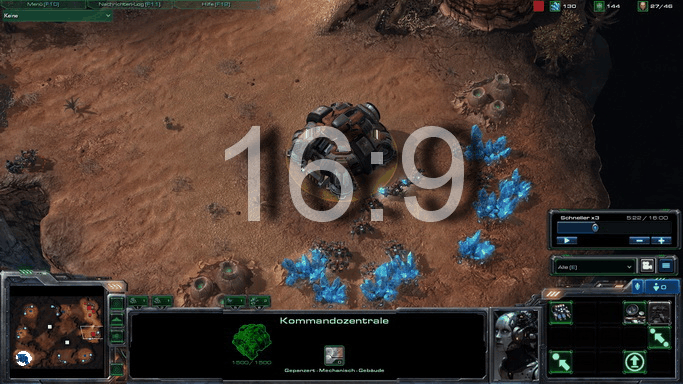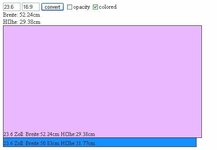On august 4th we announced that we had been working together with BenQ for the past year to develop a monitor which was optimized for competitive gaming. ZOWIE GEAR's legendary professional gamers, Emil 'HeatoN' Christensen and Abdisamad 'SpawN' Mohamed provided feedback and ideas for optimization of the monitor in the beginning of this cooperation. During the development of the monitor, SpawN and HeatoN have visited BenQ's facilities on several occasions to follow up on progress in the development, to optimize certain features and to test specific functionalities of this monitor.
Today, on Sunday, September 26th 2010, we are ready to announce the outcome of our cooperation.
We proudly present to you the BenQ XL2410T competitive gaming monitor!
The BenQ XL2410T is a 23,6" Widescreen LED monitor with a 1080p Full HD panel, so it can be used for PC-gaming, console-gaming as well as watching movies on.
As you expected, the XL2410T has a fast refresh rate of 120 Hz. We are aware that some gamers has experienced problems with other monitors not being able to perform with the full 120 Hz in 640x480 and 800x600 resolutions. The XL2410T can perform with 120 Hz in 640x480, 800x600, 1024x768 and (1920x1080, DVI –only)! To ensure that enemies are clearly displayed without motion blur the monitor also has a quick response time of 2ms GTG (OverDrive) and a Dynamic Contrast Ratio of 10,000,000:1 which provides detailed images and clarity in both darkened and brightened situations.
That's very good you think. But still you want to know; what did we do to optimize to be able to call this monitor a "competitive gaming monitor"
Well, first of all we made sure that the monitor had a simple, yet sleek design, using natural black colors without reflecting lighting or the activities going on behind you.
Then we had a think about what we could do to adjust and optimize the coloring of the monitor for specific ingame situations where you can have a hard time seeing your opponents. SpawN and HeatoN wanted to optimize the coloring of the monitor completely to be better suitable for FPS-games and to provide a more comfortable and consistent experience, while creating a better balance between the performance and visual appearance. Instead we created a predefined setting called the "FPS mode" and two "User Modes" which allows the gamer to create dedicated and personalized settings - for other games or activities.
An example of one of the situations we wanted to change is rushing into a darker area of a map (i.e. "dark on dust2) and trying to spot an enemy, but the coloring of your monitor is too damn dark and you can't see the guy hiding in the corner; boom, you're dead. To prevent this, most gamers play with brightness and gamma levels of "3" but this is not really comfortable for the eyes and the game looks unnatural. The coloring of the "FPS mode" is optimized to provide the perfect balance between performance and visual appearance.
SpawN and HeatoN explained about their annoying experiences with having to play on many different monitors when competing at different events. If the monitor at a given event is only 19" and they have a 22" inch monitor at home, they would need to acquire and borrow a 19" monitor to get the best practice for the event. To prevent this for other gamers in the future, we have implemented a Display Mode function, which allows the gamer to swap between a variety of modes, Full; Aspect; Overscan; 1:1, 17", 19", 19" Widescreen and 22" Widescreen. With this function the gamer doesn't have to borrow or buy a new monitor to practice with the best conditions for their next event. Simply change the display mode and it's like playing on whatever!
This feature also makes the XL2410T the perfect monitor for gaming centres and competitive events where many different gamers are playing on the same machines. The gamers will be able to change the Display Mode to be like the monitor they are used to playing on
Next to the "Display Mode" button you will find the "Smart Scaling" button, which is a cool new feature implemented to adjust the picture size in original input to the limit of the screen. Used together with the Display Mode, users are able to define the resolution size of the monitor to be the exact picture size they wish to have
The stand of the monitor allows for height adjustment, so the user will easily be able to adjust the height of the monitor to be as comfortable for him (or her) as possible.
Last, but not least, the monitor has Picture By Picture which is a feature enabling the user to display two programs side-by-side on the screen. During tactical meetings, you can have your game running on one side and watch your girlfriend on cam in a different window. Or if you're the camper-type, you can be camping in a game while watching a movie. Wuhu
The monitor is 3D ready, authorized and certified by NVIDIA and has D-sub, DVI-D-DL and HDMI connectivity values. We understand that gamers use their PC's for more than just to game on, so it was important to have features for some extreme entertainment.



 der Fullhd Zug wird nicht zum aufhalten sein, also wird es in Zukunft noch mehr Spiele geben die auf 16:9 eine bessere Figur machen wie auf 16:10. Für paar Forum Nerds wirds kaum eine extra Wurst geben.
der Fullhd Zug wird nicht zum aufhalten sein, also wird es in Zukunft noch mehr Spiele geben die auf 16:9 eine bessere Figur machen wie auf 16:10. Für paar Forum Nerds wirds kaum eine extra Wurst geben.





